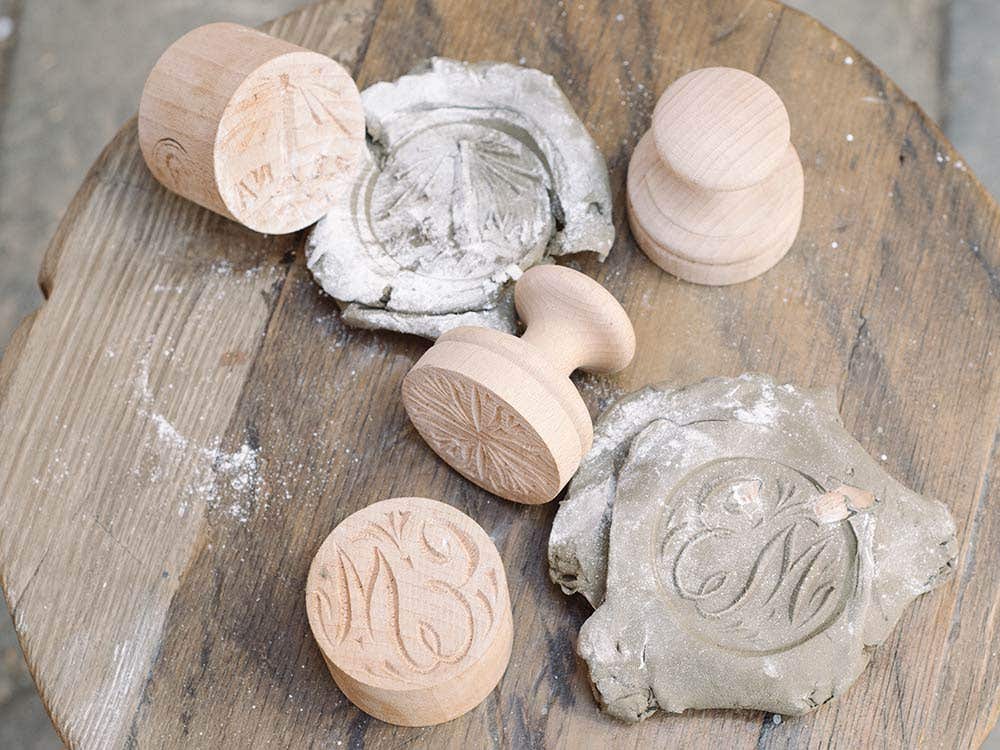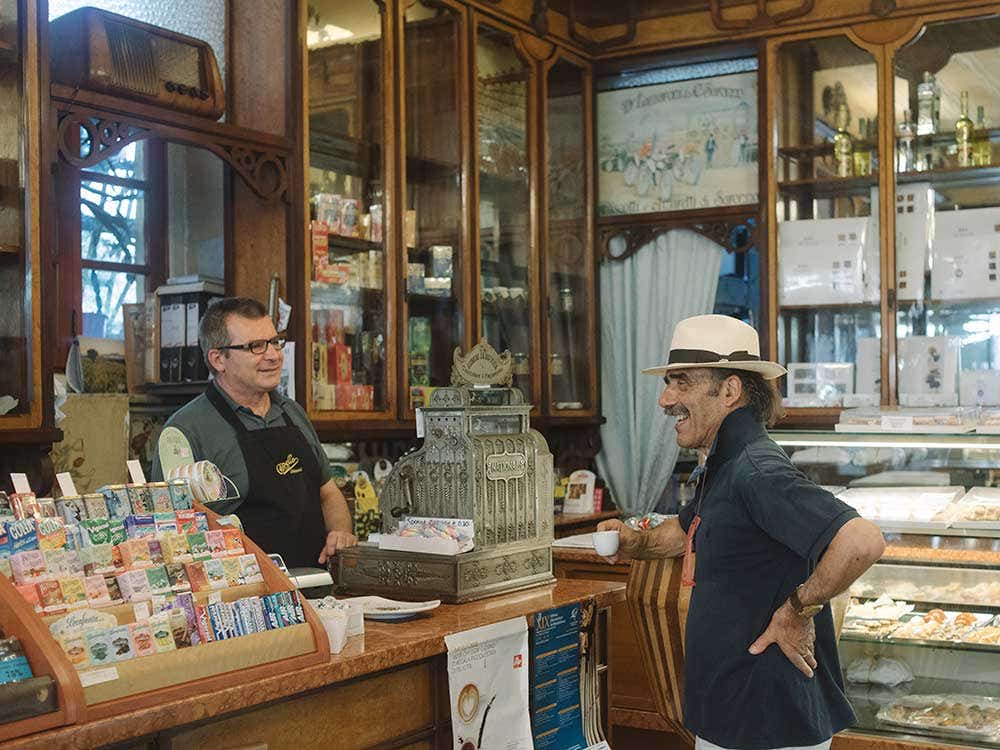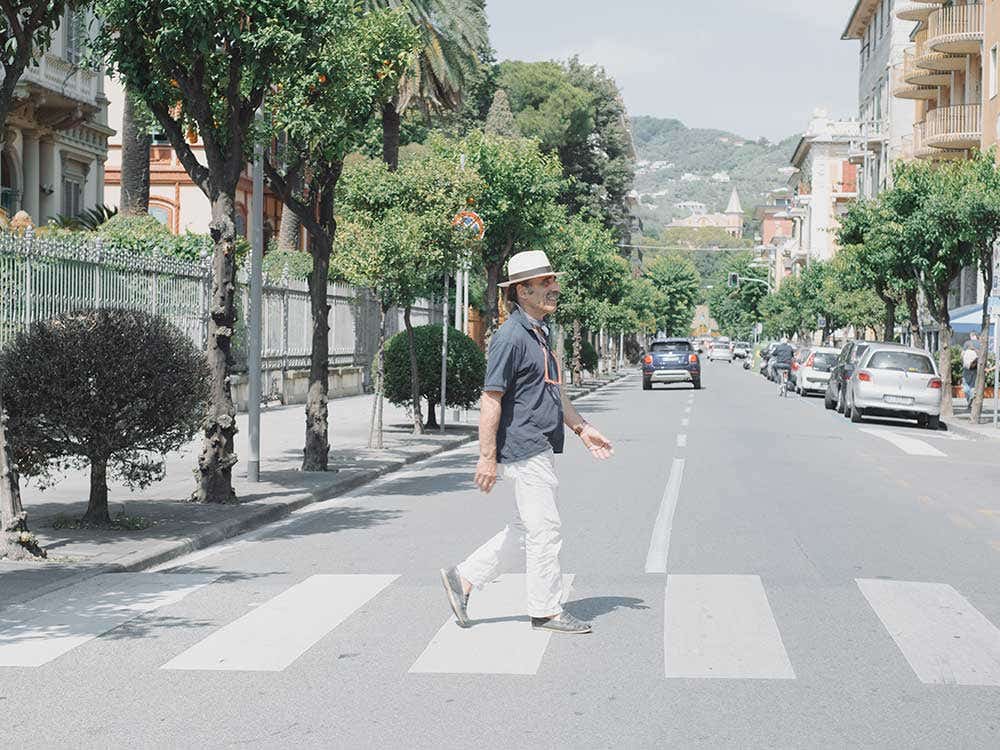
Meet the Master Craftsman Behind These Gorgeous Pasta Stamps
A visit with the corzetti stamp maker of Chiavari
We’d come to see the wood carver in Chiavari, one of those perfect small-scale coastal Ligurian dream towns scrunched up between the Mediterranean Sea and the Apennine mountains.
Arriving at his address on Via Bighetti, we found ourselves in front of a spare, if elegantly dilapidated, storefront. An old wooden rocking horse stood sentinel at the open door. Inside there were statues everywhere. Sculptures of minotaurs, headless torsos, and flying angels hung next to oil paintings of Garibaldi and Stalin. Countless chisels and wooden mallets and old iron tools were lined up on a workbench.
“Buon giorno?”
No answer came. On the verge of leaving, we heard a holler and shuffled back out into the sunlight. To our right, in the adjacent courtyard, shaded by a sensationally beautiful marble church, a focused-looking man was bent over a rotting hunk of wood. He wore a white artisan’s smock dotted with ink and paint stains, and he had a can of Coca-Cola in his hand. He was using the soft drink to clean the thing: a large, weather-beaten bust of Aphrodite. “It’s amazing how Coca-Cola removes stains,” explained the gentleman through his unruly salt-and-pepper mustache. “I carve as well as restore nautical figureheads. You know the British vessel called The Baboon? I did that one.”

We watched him scrub some more Coke into the whorls of Aphrodite’s hair, and then he stood up to greet us. “Signor Franco Casoni, intagliatore. You came for the corzetti, sì?”
Liguria, and this town in particular, is the homeland for one of Italy’s great pastas: corzetti. These thin, round coins of pasta, slightly larger than silver dollars, are embossed with sauce-retaining decorative indentations. Making the disks properly requires a wooden stamp. Before us stood one of the few remaining local master craftsmen capable of producing this piece of essential pasta gear.
“What does intagliatore mean?” I asked.
“A wood-carver—an engraver,” he replied, with a gust of pomp that quickly swelled into a full-blown puffed-chest affectation of mock solemnity and grandeur. “I work only on commissions: wooden Jesus for the church, statuettes for the home, and of course my specialty in the culinary realm, the corzetti.”
I started to ask him what else Chiavari is known for, but he immediately interrupted me with a flourish of wagging fingers.
“You must say it properly—you have to put the emphasis on the first A, not on the second A.”
I thought about it for a second; it wasn’t that easy to do, actually.

“Listen to me: Chi-A-vari is the town. But when you say it Chia-VA-ri, this means sexual reproduction. To fornicate, you understand? It is pornography! No, you cannot say it like that. Va bene! What am I chiseling into your stamp, then?”
One of my friends, Ryan Gray, owner of the Montreal restaurant Nora Gray, presented Signor Casoni with his restaurant’s business card so that he could engrave its logo into a birchwood stamp. Casoni set about doing it with gusto, singing something in Italian that involved the word manetta.
“What’s a manetta?” we asked.
“You know the propeller on an old plane, that you have to crank up by hand?” he answered. “I always have to turn on the manetta and activate the thrust lever to get started with the chisels.” And just like that, he lifted off, deftly tunneling grooves into the virgin wood. He kept humming as he peered down at the stamp through peachy-pink reading glasses. Every now and then, he stopped to wipe off the lenses with the blue kerchief that he wore around his neck. He called it a mandillo: “Like the pasta you normally get with pesto here in Liguria, the mandilli.”
While carving his minute, detailed incisions, he kept singing songs in an operatic baritone: “O che Maria!” Every few minutes, he’d pause to admire his handiwork and share an anecdote. “Someone once came and asked me to engrave the state of Texas into a corzetti stamp,” he recounted, shaking his head and making a what can you do about it? gesture. “Americani!”
“What is the difference between corzetti and croxetti?” we asked him, having noticed both spellings on restaurant menus in these parts.
"Same thing," he replied. "They're interchangeable." The pasta shape goes by a variety of spellings, he said, from curzetti to croseti to cruscettû. All of them stem from the word croce, meaning cross. "Many were traditionally stamped with the cross or crest of the crusaders, the crociati," he continued. "But it also relates to the pre-Latin word krosu, which means etch, like this."
The etymology lesson deepened as he carved. Casoni's words flew by like whittled-off splinters through the air. It was hard to keep track of all the divergent meanings that had led to circular stamped pasta coming into existence centuries ago and how that connected to us making proper crixetîî or whatever they may be called. "Another important root in Genoese dialect is crêuza de mä," he announced. "An old narrow path from the ocean up to the mountains. Mainly used by mules and fishermen and children. It is also the title of a Fabrizio de André song. You know it?" He started singing, la la la la la, crêuza de mä.
After taking us down a few more winding historical footpaths, he put the finishing notches into the stamp and asked what kind of pasta sauce Nora Gray would serve with the corzetti. Ryan put the question back to him, asking him what he would recommend. "The classic combination of course is pesto and corzetti," Casoni began, "but pesto is good with everything. Pesto is even good on top of wood." To demonstrate, he picked up a stray piece of pine and pretended to chomp it.

“The best way is a sugo bianco alla genovese. You heat up some onion with celery and carrots and maybe a bit of garlic, then add some pine nuts and minced veal. That’s it.”
“Do you add parsley?” I checked, writing it all down.
He looked back at me uncomprehendingly, a little outraged.
"Prezzemolo?" I tried, wondering if perhaps he simply didn't know what parsley was in English. (Plus: Saying prezzemolo out loud is one of the euphonious reasons I love Italy.)
“Ma no!” he replied, waving an indignant index finger in the air. “Prezzemolo is only with fish! And no tomatoes with your food in Liguria either!”
All this cooking talk was making Casoni peckish, so he suggested we head over to a local café for a quick bite and some espressos. We went around the corner and down a few streets to a ludicrously ornate 191-year-old pastry shop called Pasticceria Copello. The paneled wood and brass interior was a Stile Floreale design that seemed like something Casoni might have dreamed up and carved into existence if he’d been around a century or two earlier.
The café employees referred to Casoni as maestro. They knew him well and clearly liked him, perking up as soon as he waltzed in. (Not that the effect lasted; 10 minutes after we arrived, the barista fell asleep on the coffee machine.)
“What’s a classic thing to have with a coffee here?” I asked.
“Wedding cake,” he answered.
We thought he was joking. But no, it turned out they actually had a silvery-cream-frosted one-layer wedding cake (torta di esposa) that they sold by the slice. Special occasions are a daily reality in Chiavari, apparently. The cake certainly matched the buildings outside—which consist primarily of dolled-up wedding cake structures, painted-on shutters, pastel faux-reliefs, and extravagantly ornamented moldings. Casoni ordered sparkling wine, to show us how Ligurian artisans roll in the late mornings.
He started chatting up a radically overdressed, extremely svelte, 6-foot-tall woman in architectural platform heels and some kind of outer-space couture. Pretty soon, he was twirling her around the room, his eyeglasses bouncing on their strap in the thickets of his chest hair.
As we walked back to the workshop, he spoke about the town’s illustrious carpentry history. “Why, this is the birthplace of Chiavarina chairs!” he said, describing a classic of 19th-century furniture design that became de rigueur with nobility around the world and is still used in the U.S. White House State Dining Room to this day.
When it came time to go, none of us wanted to leave Casoni's world. To engage his services is to receive much more than a bespoke pasta tool or a Coke-scrubbed nautical figurehead for your seafaring vessel. When you visit Signor Franco Casoni, intagliatore, what you really get is that rarest of things: a story.
Keep Reading
Continue to Next Story










